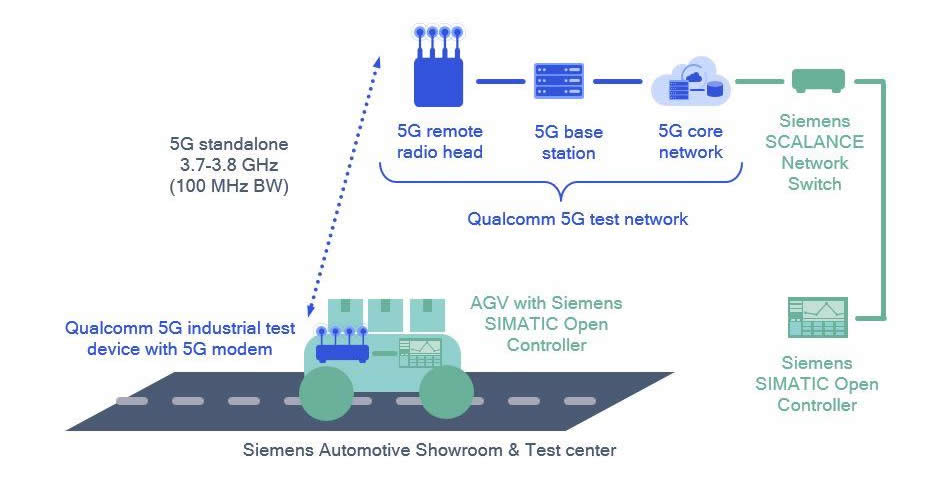Michelle Donegan is a tech writer who has covered the communications industry for more than 25 years on both sides of the pond. Having worked for various industry titles, including Communications Week International, Total Telecom and Light Reading, she specializes in mobile network technology trends.

Qualcomm Technologies and Siemens are testing a private 5G standalone (SA) network in a proof-of-concept (PoC) project at the Siemens Automotive Test Center in Nuremberg, Germany. The companies claim it is the first private 5G SA network using 3.7GHz-3.8GHz frequencies.
The project provides a real-world environment where 5G technologies and industrial applications can be tested, such as automated guided vehicles (AGVs).

Qualcomm provided the 5G industrial test devices and 5G SA test network, which includes 5G core, base station and remote radio head. The SA mode for 5G means there is no reliance on 4G networks and both user plane and control plane traffic are handled via 5G. It is considered better suited to supporting use cases that require Ultra Reliable Low Latency Communications (URLLC) in sectors such as automotive and manufacturing.
- Useful read: What is a Private 5G Network?
Siemens provided the industrial setup along with its Simatic control systems, which enable industrial automation, as well as IO devices.
Among the work planned for the private 5G network PoC, the companies will test and evaluate the machine-to-machine communication protocol OPC UA and industrial Ethernet standard Profinet. The goal is to develop and test solutions that can be used with 5G standard technology based on Release 16, which includes URLLC and is planned for completion in June this year.
Eckard Eberle, CEO of Process Automation at Siemens, said: “Industrial 5G is the gateway to an all-encompassing, wireless network for production, maintenance, and logistics. High data rates, ultra-reliable transmission, and extremely low latencies will allow significant increases in efficiency and flexibility in industrial added value.”
Private 5G for Industrial Apps
There is a great deal of interest in private 5G networks, and especially in Germany where the regulator has set aside spectrum in the 3.7GHz-3.8GHz band for local licenses. Companies will be able to apply for licenses to use the 5G spectrum on a limited, local basis, such as for a private network that covers a manufacturing facility.
For example, Ericsson and Telefónica Germany are building a private 5G network for Mercedes-Benz’s new Factory 56 production plant in Sindelfingen.
Interest in private 5G networks goes well beyond Germany, though. Research firm SNS Telecom & IT recently forecasted that private LTE and 5G network spending would increase from $4.7 billion at the end of 2020 to $8 billion by the end of 2023.
In the UK, regulator Ofcom is considering plans to make spectrum available in the 3.8GHz to 4.2 GHz range for private 5G networks.
50% off Lyca Mobile’s Pay As You Go plans
Lyca Mobile’s cheap Pay As You Go deals include roaming and international minutes.









